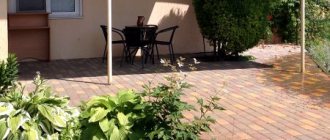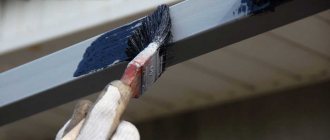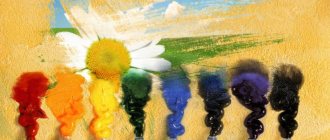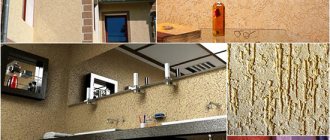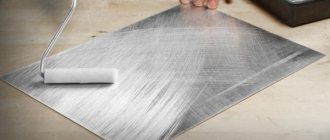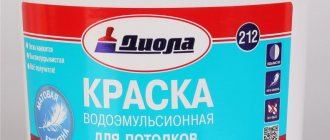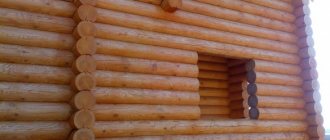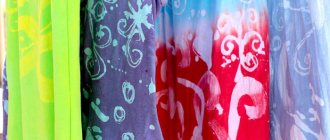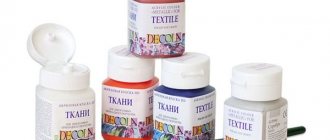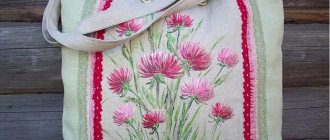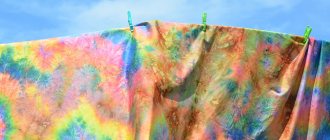Application area
Fabric dyeing is used in various industries:
- Furniture industry. The unique upholstery of a sofa or chairs is often a source of pride for the owners.
- In the fashion industry. Every year, fashion designers show us the fashionable colors of the new season from the catwalks.
- Creation of interior items. Various panels, tablecloths, paintings, curtains add their own flavor to the design of the room.
At home, faded or worn items are often given new life with the help of paints. Needlewomen use various pigments to paint decorative napkins and clothing accessories.
How to paint with acrylic paints on glass?
How to paint on glass with acrylic paints?
- It is better to paint over several layers. ...
- To ensure even layers, add more paint to the brush and quickly spread it over the glass surface.
- To add texture to the design, use a foam sponge or a stiff brush.
Interesting materials:
How to make mail your home page? How to make an underline for a signature in Word? How to make yeast fertilizer for tomatoes? How to search on a computer? How to make a slide show in a presentation? How to fully format a flash drive? How to do a hard reset? How to do a hard reset on an iPhone? How to make towels soft again? How to preview a folder?
Types of dyes
Gone are the days when Iran's right hand was cut off for importing artificial dyes. Now, even in their homeland, indigo plants actively synthesize blue pigment to dye denim fabric.
Based on their composition, dyes are usually divided into:
- Acrylic
- Aniline
- Stamp
- Plastisol
- Natural
The choice of a specific paint depends on the purpose of use and the composition of the material. Natural and aniline dyes are best suited for uniform dyeing, and luminous and acrylic dyes are best for painting on fabric.
Acrylic paints
The most popular dyes for silk, wool and cotton fabrics today are acrylic dyes. They are convenient for applying both small dot images and creating entire masterpieces. Spectacular panels, small napkins or original blouses can become a source of pride for you.
The technique of painting with acrylic paints is identical to painting with watercolors or gouache. Draw an image onto the fabric with a pencil or a special marker, and then use a natural bristle brush. To avoid going beyond the boundaries of the drawing, use a colorless outline.
For painting on fabric, water-dispersion based acrylic paints are used. They are odorless and dilute well with water. After complete drying, they become waterproof and indelible from the fabric. However, in order to avoid streaks, it is recommended to wash such items by hand, at a water temperature of no higher than 40 degrees.
Acrylic dyes are produced in the following types:
- In tubes. The most economical form factor. Allows you to maintain the freshness of paint for a long time.
- In cans. Spray paint is used to color large areas of fabric. It should be taken into account that the material itself becomes rigid and stops stretching.
- Spray. Unlike aerosol, the dye is sprayed by droplets. It is not explosive because there is no pressure inside.
The best manufacturers of acrylic paints:
- Simplicol (Simplicol)
- Decola
- Marabu
- Dylon
Aniline dyes
This type of dye is available in powder or liquid form. Suitable for single-color dyeing of natural fabrics.
As a rule, synthetic or mixed fabrics containing more than 60% artificial threads are difficult to redye.
The standard sequence of working with these paints is as follows:
- The pigment is dissolved in a large volume of liquid. The proportion is 1:30 or 1:40 in relation to the weight of the fabric being dyed. So, for a T-shirt weighing 100 grams. use 3-4 liters of coloring liquid.
- The fabric is immersed in the composition and boiled at a temperature of 95 degrees. The longer the process, the darker the color will be.
- At the end of cooking, add 2-5 tbsp. l. salt to fix the paint.
- If you are dyeing wool, add a couple more tablespoons of vinegar to the water. If it’s cotton fabric, then soda.
- Don't forget to rinse the item after painting. The fabric may fade over the next 3-4 washes, so wash it separately from light-colored and easily soiled items.
This coloring option is reminiscent of the batik style. Aniline dyes can also be used to achieve other effects on fabrics:
- Gradient. The fabric is gradually lowered into a vat of dye at equal intervals. Then the area of material that has been painted for half an hour will be darker than the one that was in the liquid for only 10 minutes.
- Divorces. In the 90s, jeans were dyed this way at home. The fabric is twisted as if to squeeze it out and tied with a rope. In this form, the material is boiled.
- Nodular. Small buttons or coins are covered with cloth and wrapped with thread. After painting, characteristic traces in the form of rays remain on the material.
Stamp inks
Stamp inks are used in the hotel industry and laundries for marking bed linen, towels and other fabric consumables. Their chemical composition is varied:
- Alcohol based. Dries quickly. Withstands bleach and boiling.
- Water-glycerin based. Absorbs quickly and does not stain your hands. Withstands temperatures up to 70 degrees. The most commonly used color is black.
- Oil based. Permanent paint. Dries slowly after application.
- Colorless. Invisible in normal lighting. They manifest themselves under the influence of ultraviolet radiation. Used for hidden marking.
Plastisol paints
Luminous patterns on clothes and sneakers are often seen among people hanging out in clubs.
Unique images are applied with special fluorescent paints based on plastisol.
The following types are available for sale:
- Glows in the dark and under UV light.
- Glows only when exposed to UV radiation.
There are also visible and invisible paints. The latter have a white color in daylight, and in the dark they glow blue, yellow, green or another color.
Types of staining
Painting on fabric, which is done by hand, is called batik. Mostly natural fabrics are used for work: cotton, linen, wool, silk, but some masters also paint synthetics. There are several types of batik, namely:
Cold - this type involves the use of a reserve composition, which prevents the paint from spreading over the fabric when cold. A drawing made using this technique has clear, closed contours; it is more graphic than prints made with other types of coloring.- Hot - with this type of dyeing, melted, hot wax is used as a reserve, which is removed from the fabric after completion of the work. The drawings obtained in this way have a clear structure and rich colors.
- Knotted - this batik is characterized by the fact that all kinds of knots are first tied on the fabric, and then acrylic paints are applied. The description of the drawings obtained as a result of this technique can be described as abstract, but they look very elegant.
- Free painting - gives the artist performing the drawing complete freedom in choosing a picture and execution technique. The work is carried out on dry or wet fabric and in most cases a reserve compound is not used. When painting dry, the print is clearer, while wet painting gives a smooth pattern with soft color transitions.
- Spraying - painting is done using an airbrush, under the influence of which the dye is sprayed onto the canvas. This method allows you to achieve the presence in the product of areas with different color intensities and fuzzy, blurred boundaries.
What fabric can be dyed
There are a lot of fabrics for clothing. Conventionally, they can be divided into natural and artificial types. Cotton, silk, and linen are more suitable for thematic processing. The fact is that natural fabrics:
- They absorb new paint well;
- Less likely to react to various chemical dyes;
- They have a uniform structure of matter.
Combined fabrics such as viscose are less suitable for dyeing. In general, all budget and versatile products are made from several fabrics.
Therefore, it is better not to process artificially created synthetics manually, because it can quickly lose color.
If there is no professional service, you will have to select painting techniques and consumables depending on the type of synthetics:
- Bologna fabric – welcomes application of paint in two layers by hand;
- Polyester - reacts well to acrylic;
- Universal denim composition - renewed when using heated dye.
The composition of the fabric matters a lot when dyeing is at stake. The corresponding indicator also allows you to determine the complexity of processing.
Drying and curing
In order for the design to stay on the fabric longer, it must be fixed after drying. The paints contain special resins that create strong adhesion to the fibers of the material after heat treatment.
The procedure for drying and fixing is as follows:
- dry the drawing for 12-24 hours;
- secure by ironing the pattern from the reverse side for about three minutes;
- turn over and quickly iron the design from the outside through the other fabric.
The temperature of the iron soleplate should match the type of fabric on which the pattern is applied. Iron slowly but continuously, without holding the iron in one place. It is better to place an unnecessary cloth under the drawing so that the colors do not imprint on the ironing board.
A big plus of acrylic paints is that the painted item can then be used. Once dry, they are not washed off with water. To make the drawing last longer without crumbling, follow the care rules:
- The water temperature when washing should not exceed 40 0 C. Machine washing of natural fabrics is allowed, just choose a delicate cycle. It is better to wash synthetics by hand. Try to reduce the washing time to a minimum, so the pattern will crumble less.
- The use of bleach is strictly prohibited.
- The painted product should be ironed from the wrong side.
Which dye to choose for fabric
In addition to the origin of the fabric, the condition of the dye itself affects the ease of dyeing.
The latter may look like:
- Liquid mixture – suitable for spot painting;
- Spray can - used for painting large areas of fabric;
- Powder - used for various purposes.
If it is necessary to create a focus of attraction on the surface of clothing, you can use the so-called. rubber paint, which is liquid plastic.
It is used in a limited state, because... after drying it acquires a relatively rigid state.
Natural paints
If the environmental purity of the fabric is at stake, then natural raw materials can be used as a coloring pigment.
The choice of the latter depends on the desired color design:
- Red – raspberries or onion peels;
- Yellow – leaves of birch or wormwood;
- Green – juniper berries or sorrel greens;
- Blue – blueberries and blackberries.
Ready-made colors are mixed with each other to obtain complex solutions - orange, purple, brown, etc.
Soy milk must be used as a binder. It is applied to the fabric before dyeing or mixed with a solution of natural dye in a 1:1 ratio. The solution itself is prepared by infusion or boiling
Features of coloring different materials
Here are some general guidelines for coloring clothes made from different fabrics.
Cotton products are dyed in water with a low calcium content (the so-called “soft water”), and after tinting they are rinsed in a weak solution of vinegar (1 tbsp per 5 l). As a result, the pigment will adhere more strongly to the fabric, and the item will not fade when washed.
Pay attention to: How to paint plastic bottles correctly?
When painting linen products, add a spoonful of salt to the solution, so the item will be dyed better and more evenly. Woolen items are evenly colored with an aniline dye with a special mark. Acrylic for wool is used much less frequently - it does not dye well and spoils the structure of the fabric.
Silk clothes must be washed and rinsed before tinting in order to remove the impregnating composition from the new item and the remains of household chemicals from the old one. Clothes made of tulle are difficult to color. For better adhesion of the pigment to the fibers, it is recommended to starch the item. Viscose and polyester are not dyed with natural dyes.
